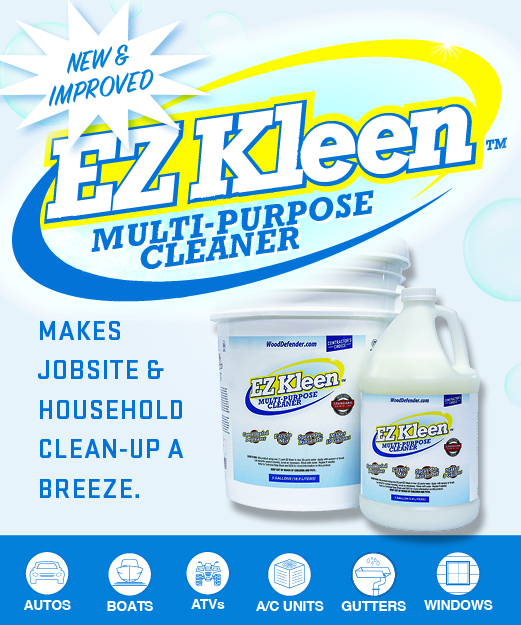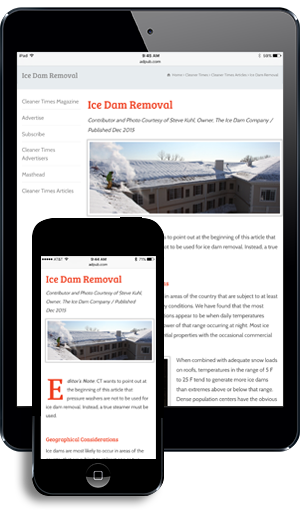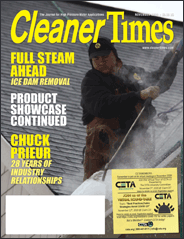
Ongoing Education
by Diane Calabrese |Published February 2025

Who needs more education when AI will make all available knowledge as close as our fingertips or the sound of our voices? Everyone does.
Retrieval of information (even at the speed of light) is not the same as knowledge. An individual must be able to think and respond without assistance and to understand the limits of AI.
In the context of knowledge, more is better. Let’s begin with the practical part for our industry—at the level of a business.
What’s the advantage employees realize from ongoing education? “It keeps them and our company on pace with the industry,” says Linda Chambers, brand and sales manager at GCE/Soap Warehouse Brand in Norcross, GA.
Planning educational opportunities so they do not compete with day-to-day operations has not been difficult for the Peach Tree State company. “We can schedule time on a weekend or after normal business hours so as not to interfere with the regular work,” says Chambers.
There are many good options for structuring ongoing education sessions. “A company could purchase an online program that employees can access as time allows to be completed within a specified time period,” says Chambers. “And of course, employees are paid for their time.”
The cost of ongoing education brings us to a significant question that must be answered, says Chambers. “How should an employer plan to pay for the expense of education?”
The answer is not difficult. “It should be budgeted in like any other labor expense—PPE, workers’ compensation, or health insurance,” explains Chambers. “You have to price your services to cover these expenses, or you will not be able to hire and keep good employees.”
Yes, retention of employees gets a boost from ongoing education. Members of a team want to keep learning and taking on new responsibilities. The educational opportunities support them in that goal.
“For the employer, ongoing education is an investment in your team,” says Tim Mendoza, president and CEO of H2O Power Equipment in Commerce City, CO. “For the employee, it’s an investment in yourself. For both parties there should be a return on investment that leads to better outcomes and additional opportunities.”
Mendoza explains the mindset of the employer is the key to productive, ongoing education. “If this is a priority for a business owner, then they won’t think, ‘How can we make time for this?’ but instead, ‘How can we ensure the time we allocate for this is the most impactful and beneficial that it can be?’”
To be sure, businesses engage in ongoing education of their employees during all operating hours. New employees learn from veterans, and all team members look to the owner as a model of how it’s done.
Turning to a veteran of the industry can be an excellent way to learn. Michael Hinderliter, president of Steamaway Inc. in Fort Worth, TX, has been cleaning fleets since 1985. That’s 40 years of solid experience.
For example, Hinderliter reminds us that often the conventional approach to an industry topic can be broadened. Take the importance of regular fleet washing. Being able to discuss the topic from all angles with clients and prospective clients is important.
And, yes, says Hinderliter, the enhancement of image and brand conveyed by the clean vehicles is significant. But it goes beyond that. “I believe safety is the biggest benefit because it is much easier to see lights and reflectors as the equipment travels from location to location. It is also much easier to spot damage to the truck or leaks that need repair.”
Taking a workshop or participating in a seminar that’s organized by an industry veteran is an excellent way to learn more. In the fleet washing category, it’s about a lot more than keeping up appearances of vehicles.
“Engine washes and chassis degreasing are common needs of fleet owners when major repairs or inspections are needed,” says Hinderliter. So is “detailing when getting ready to sell a truck or make driver changes.”
Moreover, says Hinderliter, there’s a great deal to learn about detergents. And fleet washers must commit to do so. He points to detergents that do an excellent job cleaning but “can be very aggressive on the paint,” degrading it faster than milder soaps.
Hinderliter explains that the visibly dull finish created over time indicates premature wear of the paint, and something more: micro pitting. “These pits make it easy for pollutants found in the road film to attach to the surface. This causes the fleet to begin to get dirtier faster and faster over time.”
No Exceptions
Ongoing education should be part of every company’s business plan. And across the contractor, distributor, manufacturer, and professional organization ties, there’s abundant assistance with making the learning feasible and fruitful.
Doug Rucker, the owner of the Doug Rucker Store in Porter, TX, has experience as a contractor, distributor, professional society leader, and instructor. Thus, he knows and taps into the value of ongoing education.
“Equipment, cleaning products, equipment maintenance requirements, and even cleaning techniques can change rapidly in this business,” says Rucker. “Ongoing and continuing education keeps you ahead of the curve of these changes.”
Few people have an ironclad memory. That makes ongoing education an easy way to get a “helpful reminder of things you knew but may have forgotten, or stopped doing, that you need to get back to,” says Rucker.
Determination to keep learning keeps the mind—and business—fresh. “I can’t tell you how many times I see something that someone writes or posts videos about that they think is new or that they discovered, and I say, ‘Oh yeah, I used to do that, and I need to get back to doing it,’” explains Rucker.
Make the time. “You have to set aside and dedicate uninterrupted time for ongoing education. Commit to it and do not let anything interfere,” says Rucker. “Whether it’s once a week, twice a month, or once a month, put it in stone and do not put it off or reschedule it.”
Know that the owner’s commitment will be mirrored. “If it’s important to you, it will become important to them,” says Rucker.
Stay focused. “If you are having a training session on office procedures, stick to the topic,” says Rucker. “Do not mix in how to clean something or a safety topic.”
Rucker says most of his training meetings are 30 minutes or less. When the instructor knows the topic well, he or she can structure a session with the minimum time for the maximum gain.
Each company must find the approach to ongoing education that works best for it. There’s no single best way. In fact, some companies include educational tools for customers.
“Mi-T-M uses a comprehensive training platform called M-T-M University,” says Karl Loeffelholz, distribution division manager at that corporation based in Peosta, IA. “The platform incorporates visual training aids designed to enhance learning and engagement.”
The platform Loeffelholz describes is directed at customers. It includes small tests and assessments. “The approach not only measures knowledge retention but also reinforces key concepts, empowering customers to use our company’s products with confidence and expertise,” he explains.
“Employees who continuously develop their knowledge and skills not only improve job performance but also gain a stronger sense of purpose and engagement,” says Loeffelholz. “As a leader, I’ve seen the more talented your workforce is, the better your company will perform.”
The benefits that accrue to employees quite naturally fuel benefits to employers. “A well-trained workforce is the backbone of a high-performing company,” says Loeffelholz. “When employees grow their skills, they become more confident, innovative, and capable of tackling challenges.”
Companies can develop their own structured programs. They can also tap existing programs for ongoing education.
Reaching for “systemized training programs can help a business owner optimize the use of time,” says Leaett Lipker, executive direct of the PWNA with its office in Bellevue, OH. “Leverage online training modules, workshops, and resources like those provided by PWNA to streamline the education process.”
Among the other time savers Lipker recommends are cross-training employees and integrating training into daily operations. Many outcomes will speak for themselves because they will “improve employee accountability and consistency,” she explains.
Even so, a good training program should include a method for “tracking progress and ROI [return on investment],” says Lipker. “Measure the benefits of training to reinforce its value and justify the time investment—for example, a reduction in callbacks.”
Customer satisfaction is inextricably linked to knowledgeable employees. That’s because well-trained employees can better standardize processes as they meet clear expectations, proceed with accuracy, and do so with a collaborative approach, explains Lipker.
“The biggest benefit of ongoing education is the improvement in employee skills,” says Lipker. “Specifically in the pressure washing industry, consistent education ensures compliance with safety and environmental regulations while keeping the team updated on the latest techniques and equipment.”
The bottom line: A strong roster of employees who are unceasingly engaged and continue to learn leads to a robust flow of good outcomes that fortify a business. AI can’t do it alone.





